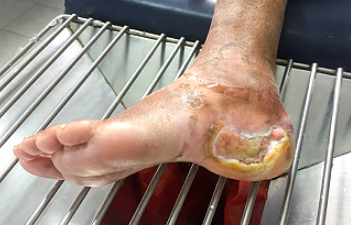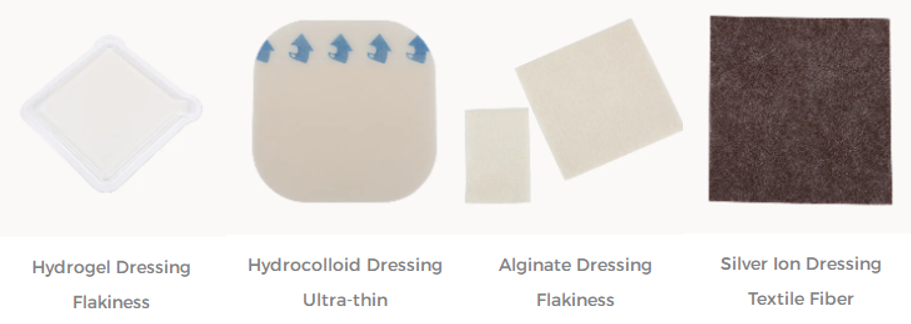In wound management practice, non-viable tissue can be divided into two broad categories: slough and eschar. They require different management approaches. In order to heal the wound better, it is also very important to learn the knowledge of the wound. Based on this, this article talks about how to care for wound suppurative infection, so as to facilitate the wound healing of all patients.
Get to know—what are eschar and slough?
Eschar: The dry, firm tissue in the wound bed is called the eschar, which is necrotic tissue that results in cell death secondary to tissue injury (ie, pressure, trauma, impaired perfusion). You may see eschar in burns, gangrenous sores, fungal infections, necrotizing fasciitis, spotted fever, and skin anthrax. The tissue beneath the eschar has poor blood flow and the wound is prone to infection. The eschar acts as a natural barrier that keeps bacteria from entering the wound. If the eschar becomes unstable (wet, oozing, floppy, swollen, and red), the risk of infection increases, and wound healing is delayed and should be removed according to institutional practice.
Carrion: Carrion is usually well-hydrated with soft yellow or white tissue on top. This necrotic tissue contains components such as fibrin, white blood cells, dead cells, microorganisms, and protein substances. It is also a common clinical symptom, which not only prolongs the wound healing time but also aggravates the condition, thereby endangering the patient's life. In addition, severe suppurative infection of the wound will continue to reduce the patient's physical fitness. If the inflammation continues to increase, the wound will expand, and then the organs and tissues will become necrotic. Timely treatment and control are required. It can also damage limb function and seriously affect the quality of life of patients.
Wounds become chronic when they fail to go through the normal phases of wound healing (hemostasis, inflammation, proliferation, and maturation/remodeling).
How to deal with it?
Such wounds usually require debridement first. Before debridement, the patient must be informed of possible problems and the patient's consent must be obtained before debridement is performed. Debridement methods include autolysis and surgery.
1. Autolytic debridement :
Utilizes its own defense system to dissolve or break down damaged tissue at the wound site, this process can generally be facilitated with dressings such as Hydrocolloid Dressing, Hydrogel Dressing, Alginate Dressing which support moisture retention and provide optimal conditions for the body's natural enzymes to activate wound debridement. This procedure is usually slower than most but is well tolerated and suitable for most patients. For example, Hydrogel Dressing dressing has sufficient water content and is suitable for eschar wounds. It can provide more water for the wound and create a moist environment for the wound surface that is conducive to tissue regeneration. The gel's slippery state can effectively avoid wound stickiness. Secondary damage was caused.
2. Surgical debridement
Surgical debridement is the use of a sharp instrument to remove the necrotic tissue above. This debridement is suitable for removing slough and eschar. Tissue frequently so that the margins of normal tissue are exposed as much as possible. When extensive debridement is required, this tissue exposure is usually done in the operating room, whereas conservative debridement can be done at the bedside in most cases.
Slough is a special type of non-viable tissue that appears as a yellowish, moist, sticky substance. It delays healing and increases the risk of infection. Removal of slough is a critical part of wound management and can be accomplished by any number of debridement methods, as described above. Debridement methods can also be used in combination for enhanced results. The specific choice will depend on the skill level of the clinician, the availability of the technique, and the patient's tolerance.
For more information on Innomed® Hydrogel Dressing, refer to the previous articles. If you have customized needs, you are welcome to contact us; we will serve you wholeheartedly. At Longterm Medical, we transform this data by innovating and developing products that make life easier for those who need loving care.
Editor: kiki Jia
Date: February 21, 2023

 English
English عربى
عربى Español
Español русский
русский 中文简体
中文简体








